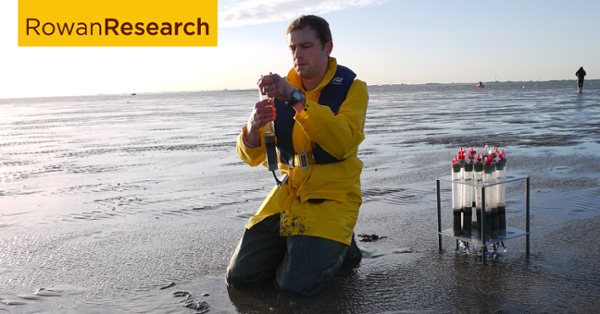Studying climate-changing greenhouse gases and a simulated mission to Mars
Studying climate-changing greenhouse gases and a simulated mission to Mars

An aquatic biogeochemist in the School of Earth & Environment, Charles Schutte, Ph.D., researches nitrogen, carbon and greenhouse gas cycling, in particular the ways in which gases affect the environment and influence climate change.
Recently, he and a team of scientists published work about a remote section of Antarctica that simulated a mission to Mars.
Charles Schutte, Ph.D.
Aquatic biogeochemistAreas of expertise:
biogeochemistry, elemental cycling, greenhouse gases, microbial processes, aquatic environments
More informationConducted in one of Earth’s harshest climates, their work sought to test the idea that nitrous oxide, a gas that is abundant in Earth’s atmosphere because it is produced by living things, would also indicate the presence of life on another planet if it were found there.
“We visited a remote, extremely cold and salty desert pond in the Dry Valleys of Antarctica, an environment that is considered among the most similar to Mars on Earth,” said Schutte, an assistant professor in the Department of Environmental Science. “There we studied the production of nitrous oxide in the absence of microbial life. We showed that this gas is produced through the interaction between rock and chemical precursors in water at extremely cold temperatures (−40°C) that are similar to those on Mars.”
The team conducted a variety of studies in an area called Don Juan Pond, the saltiest body of water on Earth, water so salty, Schutte said, that “there’s not enough water in the water for microorganisms to survive. That, combined with the iron rich rocks in this place, made us believe that in a lot of ways it’s similar to the surface of Mars.”
A resulting article, “Abiotic Nitrous Oxide Production From Sediments and Brine of Don Juan Pond, Wright Valley Antarctica, at Mars Analog Temperatures (−40°C),” published Jan. 22 in the journal Geophysical Research Letters.
“We argue that just the presence of nitrous oxide alone (on another planet) is not enough to demonstrate that yes, for sure, there is life on the planet,” he said.
More often focused closer to home, in particular on the ways in which greenhouse gases like nitrous oxide, methane and carbon dioxide are warming Earth’s climate, Schutte has investigated the effect of nitrogen, removed from the atmosphere and applied as fertilizer to crops, on bodies of water they ultimately run off into.
“This extra nitrogen ends up in estuaries and coastal oceans where it can cause algae blooms and fish kills,” he said. “I’m interested in processes that remove bioavailable forms of nitrogen from ecosystems and return it to the atmosphere as gas.”
Rowan University researchers are passionate about what they do. Find more at Meet Our Researchers.